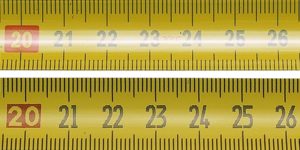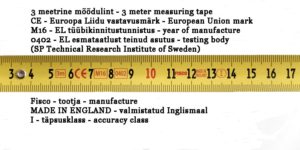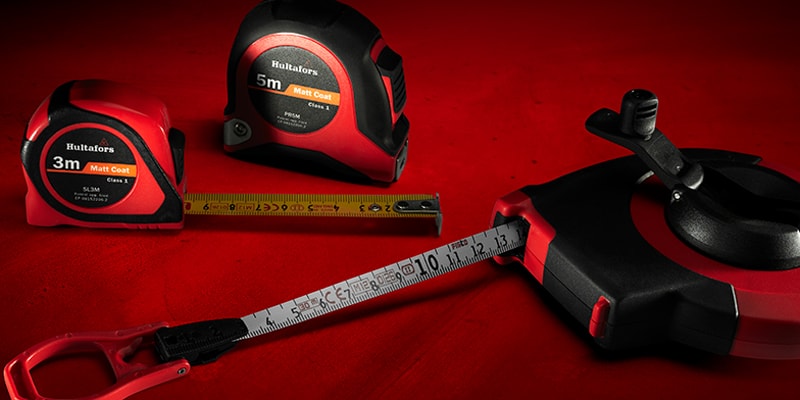In order to build a shelf, you do not need to know the length of the shelf with micrometre accuracy, millimetre accuracy is sufficient. However, you do have to avoid using different tape measures if you want the random measurement error to be the smallest. Not all tape measures are equally accurate!
Measuring accuracy is the most important aspect in tape measures. It is measured and marked with an accuracy class. The accuracy class of a tape measure indicates its instrumental bias within prescribed limits. We have to accept the fact that the real value of the measurand can never be found. Measurements always involve a measurement error, however small it may be.
In Europe, tape measures are generally divided into accuracy classes I and II, although class III is also used. Accuracy is measured at 20ºC under a tensile force of 50N:
|
TOLERANCE MM ACCORDING TO EU STANDARDS | |||
| ACCURACY CLASS I | ACCURACY CLASS II | ACCURACY CLASS III | ||
| 3 METRES | ±0,4 | ±0,9 | ±1,8 | |
| 5 METRES | ±0,6 | ±1,3 | ±2,6 | |
| 8 METRES | ±0,9 | ±1,9 | ±3,8 | |
Based on the above, the following should be considered when buying a tape measure: accuracy class, length, width, strength, ergonomics, other clever features and a durable case. You can find information about the accuracy class and manufacturer on the tape measure when choosing one. The accuracy class indicates the measurement error – the smaller the error, the better the tape measure. It is always reasonable to get the best tape measure and Hultafors PR series tape measures certified to EC Class I sure are among the best tape measures!



